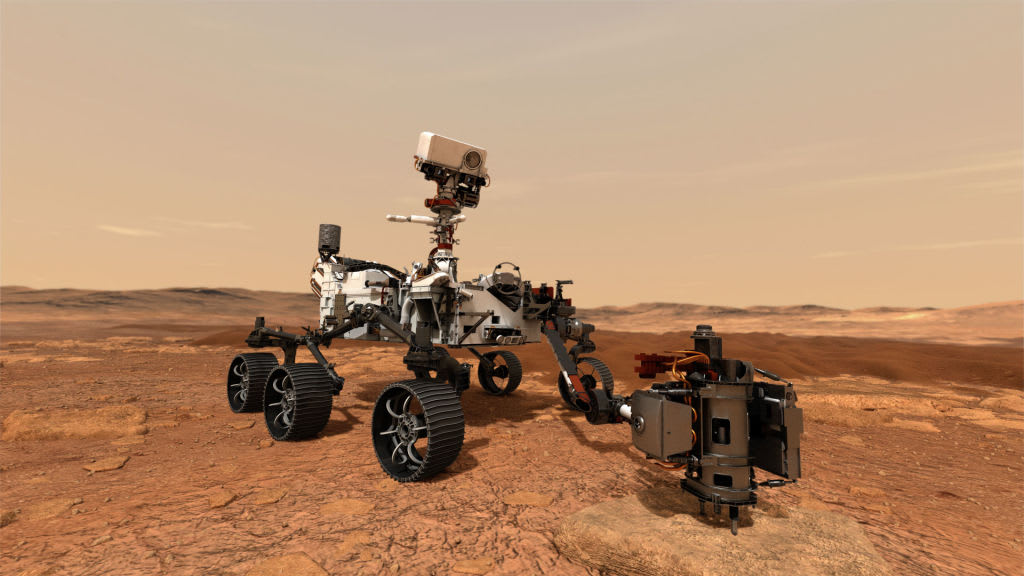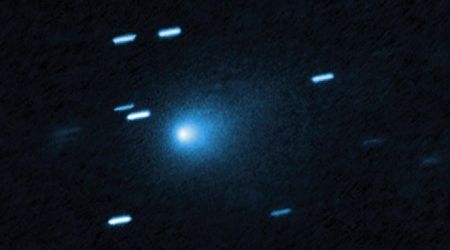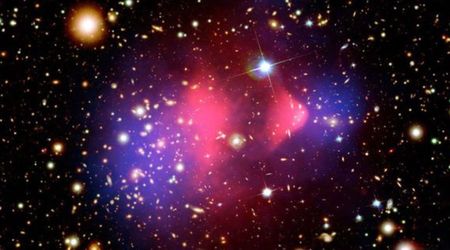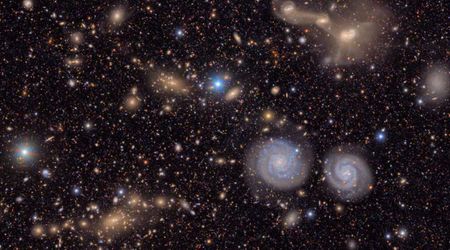NASA scientists examine ‘life on Mars’ as a rock from the surface contains clues about microbial life

Possibility of life on Mars has always intrigued scientists and space enthusiasts. For the same purpose, several missions were launched into space to gather enough evidence to settle the curiosity. The latest observation from NASA’s Perseverance rover and its scientist team focuses on an interesting rock. This sample from Mars's surface contains traces that suggests microbial life existed on the planet billions of years ago. This rock was dubbed the “Cheyava Falls” by scientists and might be the best evidence yet for past life on the planet.

Analysis being done onboard the rover indicates that the rock contains chemical signatures. They were formed by running water in the area which indicates life billions of years ago. The area is being explored by the rover and scientists are coming up with possible explanations for these features, reported NASA. Further research is needed to confirm the presence of ancient life. This was the 22nd rock core sample, collected by the rover on July 21st, 2024, from the edge of an ancient river valley.

The valley named Neretva Vallis is a quarter-mile wide and was carved by rushing water into the Jezero Crater. The rock is a fine-grained mudstone that has spots of black, blue, or greenish hues, nicknamed “poppy seeds.” There are also several dark-rimmed, millimeter-size splotches named "leopard spots." The rover’s instruments conclude that various rocks with these features are rich in iron, but their oxidation and redness vary. This was an important sign of organic matter on the surface as they may have bleached the rocks, eradicating their red color.

Scientists presented their discovery publicly for the first time earlier this month at the Lunar and Planetary Science Conference in Texas. "On Earth, reactions like these are commonly associated with microbially-driven organic matter respiration," commented Joel Hurowitz, the deputy principal investigator of the PIXL instrument of Perseverance rover, as per Space.com. “This trip through the Neretva Vallis riverbed paid off as we found something we’ve never seen before, which will give our scientists so much to study,” said Nicola Fox, associate administrator, Science Mission Directorate at NASA Headquarters in Washington.

The team also noted at the beginning that the rock had calcium sulfate veins. There is a debate as to whether the features are a result of exposure to high temperatures. This includes non-biological processes like volcanic events. However, analysis shows that the rock was never exposed to such heat or heat-related processes, causing it to recrystallize, per Space.com. "Everything seems to be consistent with low-temperature processes. The rocks that we investigated appear to fill the Neretva Vallis channel," Hurowitz added.

Various scans are taken of the Cheyava Falls by the rover’s SHERLOC (Scanning Habitable Environments with Raman & Luminescence for Organics & Chemicals) instrument. These images suggest that it contains organic compounds, like carbon-based molecules, that are building blocks of life. “Cheyava Falls is the most puzzling, complex, and potentially important rock yet investigated by Perseverance,” said Ken Farley, Perseverance project scientist of Caltech in Pasadena. With this new discovery, the research into life beyond Earth has intensified only.









